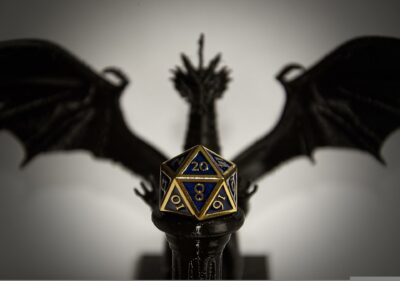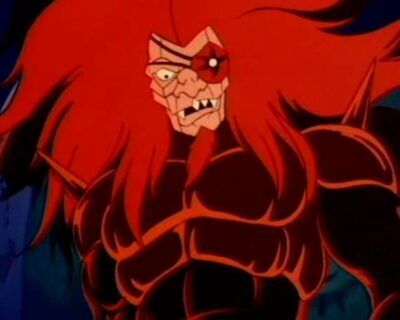The first email list I ever joined was about Dungeons & Dragons.
I’m always surprised when I remember this.

Image by ScalyDragon from Pixabay
I wasn’t all that into D&D as a newly-minted teenager. I had never even played it. To that point I only knew it by the lingering reputation of its satanic panic and because that one stereotypical metalhead in my 8th grade class played it.
Yet, I had recently made the connection that the finite worlds of video game RPGs like Final Fantasy could be emulated in Dungeons & Dragons.
Between obsessions with comic books and music, I begged for a set of the core trio of Advanced Dungeons & Dragons books as a gift, and spent spare moments imagining the worlds that could be built with them while trying to understand exactly how ThAC0 worked.
Thus, early in my days on AOL, I joined a D&D email list.
I fucking tormented them with my terrible ideas. I wanted panthers with wings a a playable race because I had made them up in a fantasy story I was writing. I wanted every character from Final Fantasy 3(/VI) as a playable class because that was my doorway into D&D.
I’m not sure if I got kicked off or if I wandered away dejected when no one liked my ideas. I never did wind up playing much D&D.
If you were on that mailing list: I’m sorry. I now fully understand the pain of having to occupy the same internet as the entire world of overeager teenagers.
I’ve fallen back in love with Dungeons & Dragons again over 25 years later for some of the same reasons I was enamored with it in the first place: it’s a vast storytelling system that is infinitely extensible and invitingly hackable. Any character or creature or setting you can imagine is just a fistful of stats away from fully existing in your campaign world.

The toy of Mon*Star was the perfect scale to swat a G.I. Joe out of battle as if he was kicking a puppy.
I love that. I’ve always loved that! I was the kid who always wished all of his toys could be the same scale so they could inhabit the same worlds as each other. Even if they weren’t that wasn’t going to stop me from having my Super Friends Wonder Woman team up with my G.I. Joes to fight Mon*Star from Silverhawks.
That D&D mailing list was a small window into the world of extending and hacking D&D at the time. There were also 3rd party D&D products, although you’d be forgiven if you never got to them because there were so many official D&D materials to choose from it felt like you could never even see them all, let alone own them all.
(I’m sure someone on that listserv owned them all. They probably hated me.)
Over the years, Dungeons & Dragons has increasingly realized the sheer power of that infinite extensibility. In 2000, Wizards of the Coast released the 3rd Edition of D&D and, alongside it, the concept of the D20 System and the Open Gaming License (OGL).
Simply put, the D20 System meant you could expand on the established rules of D&D with your own products bearing the D&D logo, but you could not supplant the need for a core rulebook
The accompanying Open Gaming License meant you could use, change, or omit any of the rules and mechanics of D&D with the brand and lore filed off like a forgotten serial number.
This freed Wizards of the Coast from having to produce disposable, low-profit books of adventures to keep their players glued to their tables. Any company could produce a derivative work to offer to D&D players via the D20 system, which could be as minor as a few new monsters, or via the OGL, which could be an entire gaming world and system that just happened to use D&D mechanics. That means you could officially use D&D rules for a modern day setting, or a sci-fi story – not only at your home table, but in a published work.
Fast forward to the present day and the current 5th Edition of D&D – 5e, for short, which has been in play since 2014.
Similar to the third edition, today independent creators can add to the branded-world of D&D, or create their own gaming systems entirely while labelling them as “5e Compatible” – which is like a wink and a nod saying, “You can still co-mingle this with your D&D 5e campaign, but you can also play it on its own.”![]()
(You can’t even say D&D in a 5e book. You have to call it “The World’s Greatest Roleplaying Game,” which is like when I would tell people about Crushing Krisis without saying its name in the hopes they wouldn’t read it, instead referring to it as “the oldest blog in Philadelphia.”)
This is a particular thrill, because 5e has had a… let’s be kind and call it a deliberate release schedule. The system hasn’t dug as deeply into every concept, mechanic, or type of monster players might have hoped to see return from past editions. Heck, it took seven years – until the end of 2021 – to get a book about dragons, and they’re in the darn name of the game!
That meant many independent publishers released many dragon-focused products before Fizban’s Treasury of Dragons hit the shelves. Some of them mined past concepts and stuck with the D&D logo, and others made up their own draconic systems and were simply 5e Compatible.
If you’re interested in the expanded worlds of D&D 5th Edition, there are several places to look!
First, there’s D&D Beyond – the all-encompassing purpose-built digital platform for D&D recently acquired by Wizards of the Coast for $146.3 million! D&D Beyond mostly relies on the many official 5e books to drive its content, breaking them up into individual components so you can buy a certain class, spell, or monster like buying a single MP3 from an album. In addition, you’re free to homebrew any creature, race, item, spell, sub-class, or feat you fancy, plus surf through thousands of other homebrew creations. But, you cannot create classes!
The next step is DMsGuild. This is a digital storefront where you can buy all things D&D branded. This includes digital and print-on-demand versions of books from prior D&D editions (all the way back to the original Basic Edition!), supplemental “Adventurer’s Guild” adventures playable at officially-sponsored conventions and events, and self-published D&D content that ranges from a single monster for $.50 to entire L1-20 adventures complete with classes, races, spells, and monsters. But, it all has to fit in the world of D&D – even if you figure out a way to make a D&D campaign sci-fi, there’s no overt co-mingling with other licensed properties or game systems.
If you want those things, the next step is graduating to DMsGuild sibling-site, Drive Thru RPG. It even shares a login and wishlist with DMsGuild! DriveThru offers RPG products for many different RPG rule systems, including non-D&D 5e-Compatible works, including full-on game systems using built on 5e.
Finally, there’s the wild west of 5e compatibility – Kickstarter! If you browse the list of 5e projects at Kickstarter you’ll discover everything from books of pre-generated inns to rules for naval combat to literal gunslinging Wild West settings without any connection to D&D aside from sharing the 5e rules.
I’ve become an avid fan of all of these platforms and their various homebrewed and self-published content, so I am deeming the next few weeks of Tuesdays as “Table Top RPG Tuesday,” or TTPRG Tuesday for short! I’ll share some of my favorite digital and physical acquisitions, highlight some things on my wishlist, and talk about what I think makes for an engaging Kickstarter campaign!
I like to think of it as my penance for torturing the poor members of that email list all of those years ago.
[…] week, a revision to the longstanding D&D “Open Gaming License” leaked. I’ve written about the OGL before, but in short it’s the persistent legal agreement that allows independent creators to use the […]